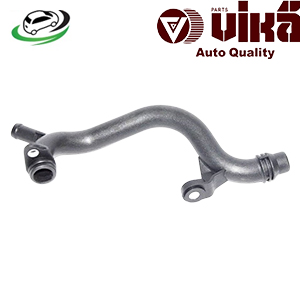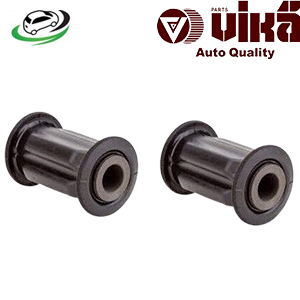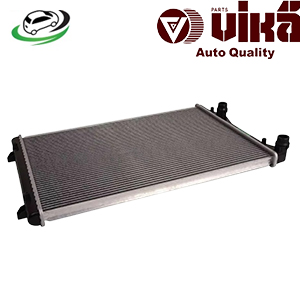-7%
Get AUDI A3 (8P1)/ TT (8J3)/ A3 Sportback (8PA)/ TT Roadster (8J9) / VW CC B7 (358)/ Beetle (5C1 5C2)/ EOS (1F7 1F8) Engine radiator 1K0121251L
The engine radiator is a crucial component of a vehicle’s cooling system, designed to regulate the engine’s temperature and prevent overheating. Understanding the functions, types, importance, maintenance practices, and common issues associated with the engine radiator is essential for vehicle owners and automotive professionals alike.
Functions of the Engine Radiator
- Heat Dissipation: The primary function of the engine radiator is to dissipate heat generated by the engine during operation. As the engine runs, it produces a significant amount of heat that must be managed to prevent overheating. The radiator transfers this heat from the engine coolant to the surrounding air.
- Coolant Circulation: The radiator plays a vital role in the circulation of coolant within the engine cooling system. It allows heated coolant from the engine to flow into the radiator, where it is cooled before being returned to the engine. This continuous cycle helps maintain optimal engine temperature.
- Maintaining Optimal Engine Temperature: The radiator ensures that the engine operates within its ideal temperature range. By cooling the coolant, the radiator prevents the engine from reaching excessive temperatures, which can lead to damage or reduced performance.
- Pressure Regulation: The radiator helps regulate pressure within the cooling system. It is designed to withstand high pressures generated by the coolant as it circulates, maintaining a sealed system that prevents leaks and coolant loss.
- Supporting Overall Cooling System Functionality: The radiator works in conjunction with other components of the cooling system, such as the water pump, thermostat, and hoses, to ensure efficient cooling. Together, these components maintain a balanced and effective cooling system.
Types of Engine Radiators
- Copper and Brass Radiators: Traditional radiators are often made of copper and brass, known for their excellent heat transfer properties. Copper radiators provide efficient cooling but can be heavier and more prone to corrosion over time. Brass is used for tanks and other components due to its durability.
- Aluminum Radiators: Aluminum radiators are lightweight and resistant to corrosion, making them a popular choice in modern vehicles. They offer good heat dissipation and are often used in high-performance applications due to their efficiency and reduced weight.
- Plastic and Aluminum Radiators: Many contemporary vehicles use a combination of plastic tanks and aluminum cores. This design helps reduce weight while maintaining effective heat transfer. Plastic components are often less expensive, but they can be more susceptible to damage from heat and UV exposure.
- Performance Radiators: Performance radiators are designed for high-performance vehicles and racing applications. They often feature larger cores and additional cooling fins to enhance heat dissipation. These radiators may be made from specialized materials to withstand extreme conditions.
- Double Pass Radiators: In a double pass radiator, the coolant flows through the radiator twice, allowing for improved heat dissipation. This design is often used in high-performance applications where efficient cooling is critical.
Importance of the Engine Radiator
- Engine Protection: The engine radiator is essential for protecting the engine from overheating. Without an effective radiator, the engine could reach excessive temperatures, leading to severe damage, such as warped cylinder heads or blown head gaskets.
- Optimal Performance: Maintaining the correct engine temperature is vital for optimal performance. A functioning radiator ensures that the engine operates efficiently, improving fuel economy and overall vehicle performance.
- Longevity of Engine Components: Proper cooling helps extend the life of engine components. By preventing overheating, the radiator reduces wear and tear on critical engine parts, contributing to the vehicle’s longevity.
- Environmental Impact: An effective cooling system, including the radiator, minimizes the risk of coolant leaks and overheating. This helps prevent environmental contamination from spilled coolant, contributing to a cleaner ecosystem.
- Cost-Effective Maintenance: Regular maintenance of the engine radiator can prevent costly repairs. A well-maintained radiator reduces the risk of engine damage and helps avoid expensive repairs associated with overheating.
Maintenance of the Engine Radiator
- Regular Inspections: Routine inspections of the radiator should be conducted during regular vehicle maintenance. Look for signs of leaks, corrosion, or physical damage, such as bent fins or cracked tanks.
- Check Coolant Levels: Regularly check the coolant levels in the reservoir and refill as necessary. Low coolant levels can lead to insufficient cooling and overheating, making it essential to maintain appropriate coolant levels.
- Flush the Cooling System: Flushing the cooling system at recommended intervals helps remove debris, rust, and contaminants that can accumulate in the radiator. This practice enhances coolant flow and improves heat dissipation.
- Clean the Radiator Fins: The radiator fins can accumulate dirt and debris, hindering airflow and cooling efficiency. Periodically clean the fins with compressed air or a soft brush to maintain proper airflow.
- Inspect Hoses and Connections: Check the hoses and connections to the radiator for signs of wear or leaks. Replace any damaged hoses or loose connections to prevent coolant loss and ensure efficient operation.
- Monitor for Overheating: Keep an eye on the engine temperature gauge while driving. If the gauge indicates overheating, investigate potential causes, including radiator issues, coolant leaks, or thermostat malfunctions.
- Use Quality Coolant: Always use the manufacturer-recommended coolant for your vehicle. Using the correct coolant helps prevent corrosion and ensures optimal performance of the radiator and cooling system.
Common Issues Associated with Engine Radiators
- Coolant Leaks: Coolant leaks are one of the most common issues associated with engine radiators. Leaks can occur due to corrosion, damage to the radiator, or faulty connections. Leaking coolant can lead to low coolant levels and overheating.
- Clogged Radiator: Over time, debris, rust, and contaminants can accumulate in the radiator, causing clogs that restrict coolant flow. Clogged radiators reduce cooling efficiency and can lead to overheating.
- Corrosion: Corrosion can occur in both metal and plastic components of the radiator. Corroded parts may weaken and develop leaks, compromising the radiator’s effectiveness.
- Damaged Fins: The fins of the radiator are responsible for dissipating heat. Physical damage, such as bent or broken fins, can restrict airflow and reduce cooling efficiency.
- Faulty Thermostat: A malfunctioning thermostat can prevent the coolant from circulating properly, leading to overheating. It is essential to ensure that the thermostat is functioning correctly to maintain optimal cooling.
- Fan Issues: The radiator fan helps cool the radiator by increasing airflow. If the fan is not working correctly, it can lead to reduced cooling efficiency and overheating.
Conclusion
The engine radiator is a critical component of a vehicle’s cooling system, responsible for dissipating heat and maintaining optimal engine temperature. Its primary functions include heat dissipation, coolant circulation, and pressure regulation, all of which contribute to the engine’s overall performance and longevity.
Regular maintenance and inspections of the radiator are crucial for preventing common issues such as leaks, clogs, and corrosion. By understanding the importance of the engine radiator and following best practices for maintenance, vehicle owners can enhance their engines’ performance, extend their lifespan, and minimize the risk of costly repairs.
A properly functioning engine radiator not only ensures efficient engine operation but also plays a significant role in protecting the environment by minimizing coolant spills and emissions. Investing in the maintenance and care of the engine radiator is essential for any vehicle owner looking to achieve reliable performance and durability from their vehicle.
Follow us on Facebook for more parts.




Reviews
Clear filtersThere are no reviews yet.